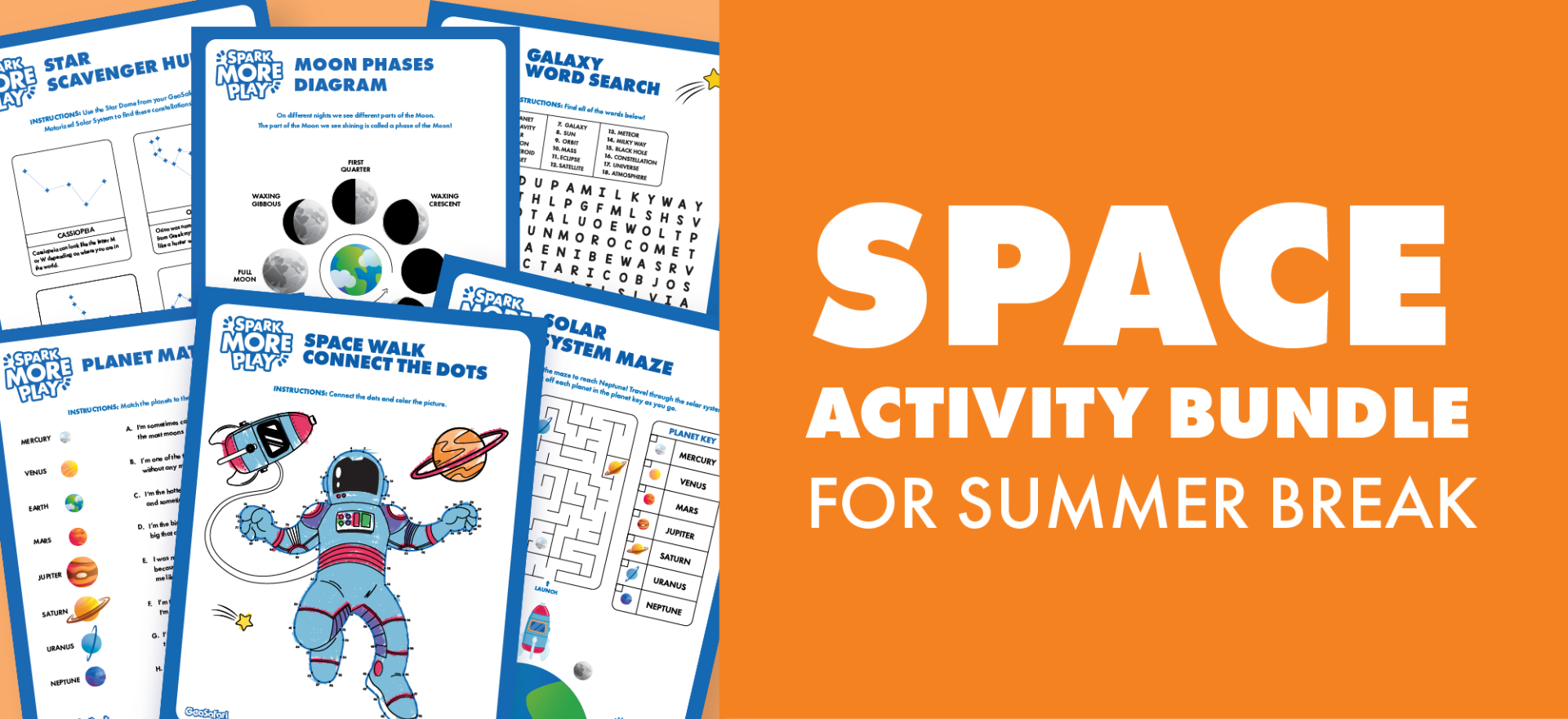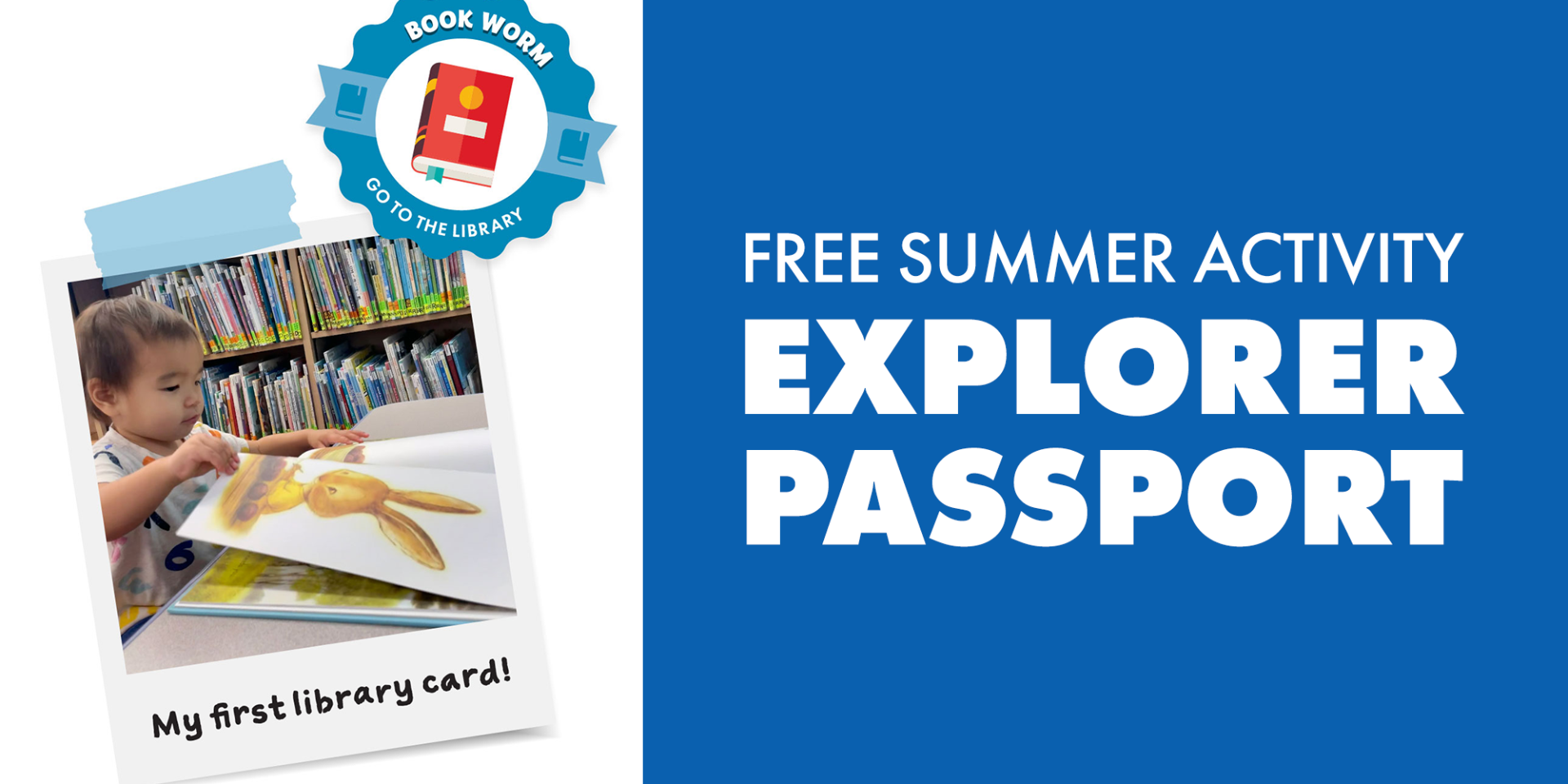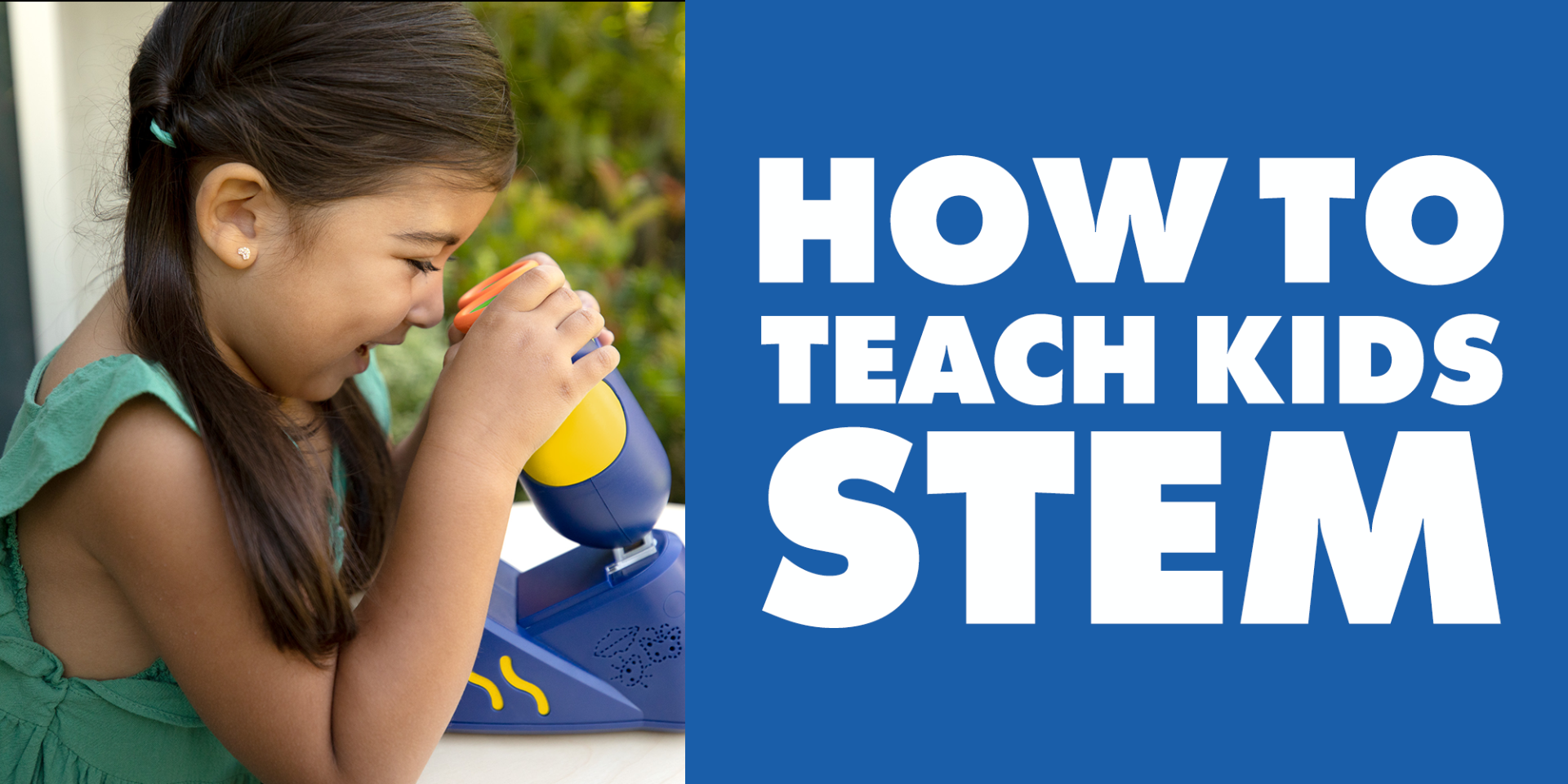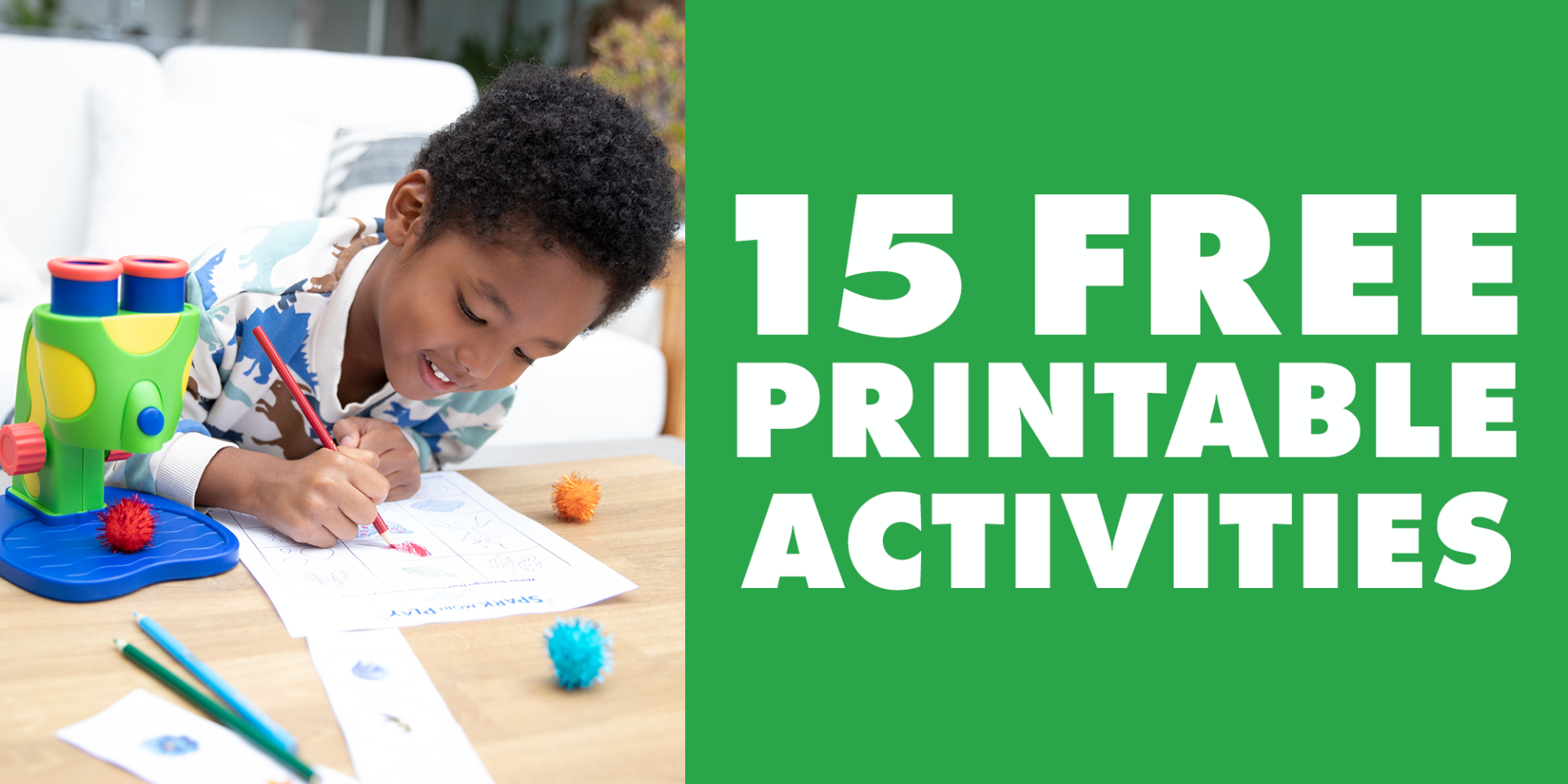
Marcia, here. I’m the product manager for Language Arts and Teacher Resources, and I make toys for Educational Insights.Here’s one I invented last year --- Magic Moves. It’s my absolute, all-time favorite.

There are thousands and thousands of toys in catalogs and stores! Where do they come from and how do they get there? Magic Moves started with an idea from my past life as a preschool teacher. For seven years, I read stories, did arts and crafts, dug in the sandbox, turned a jump rope, and “Hokey-Pokeyed” my way about. By far, circle time was my favorite time of day. It was cut-loose fun where we sang, danced, and got the wiggles out assisted (back then) by a tape player!Fast forward 20 years to working in product development for an educational toy company. I wanted to make something that would make circle time magical, that parents could use to inspire their kids to be active, and that was simple enough for preschoolers to play with themselves.I put my idea – a talking, musical magic wand that would promote creative movement play – down on a piece of paper and pitched it to the team here. I wish I could say its brilliance cast a spell over them, but it actually took me three tries to convince the group that it would be successful. So, if you think you have a great idea, stick up for it!After the idea was approved, I hired an industrial designer to draw a picture to show the factory what it would look like.

I worked with a programmer to write a document to show the factory how it would work.

I worked with a musician and lighting designer. He wrote the tunes and designed the light shows that go with them. He also designed this cool simulation to show us how they worked together.I had taken some wonderful workshops on creative movement and music and wanted to make sure the wand had a variety of musical styles so we incorporated Latin, Afro Pop, and techno or “club” style music.

I also wanted to inspire children to move in different ways so there are slow tunes and fast tunes; heavy, ponderous tunes for stomping, and sinuous, mysterious tunes for slithering. And, that’s another thing. I wanted the children to hear rich vocabulary in the course of their movement play –
stomp,
slither, and
strut, for example.In the meantime, the factory made me a model so I could test its size with children. It turned out to be too big so they made me a smaller one to test with kids again. This one worked.

Next, the factory made me what we call a breadboard, a circuit board with switches that simulate how Magic Moves would work. It’s kind of weird looking, isn’t it? This helped me test the wand’s programming, lights, music, and speech.

The factory also made me a plastic model with nothing inside. That model was used for photography for the wand’s package which our Creative Dept began designing. They also designed the decorations that add to the wand’s magic – like the stars and swirls.

At this point, the factory made me another model. This model looked like and worked like the real thing only the electronics were outside the toy. It had to be tested and tested some more so that we could determine that it was working as expected.

Finally, in October, everything was ready for production to begin. The factory started making Magic Moves. The first shipment of the toy arrived in our company’s warehouse in December – ready to ship to the toy stores that ordered it. From concept to shelf, it took over a year and a half to develop Magic Moves.

I’m so proud of it I want to ….
strut like a peacock!
 Marcia, here. I’m the product manager for Language Arts and Teacher Resources, and I make toys for Educational Insights.Here’s one I invented last year --- Magic Moves. It’s my absolute, all-time favorite.
Marcia, here. I’m the product manager for Language Arts and Teacher Resources, and I make toys for Educational Insights.Here’s one I invented last year --- Magic Moves. It’s my absolute, all-time favorite. There are thousands and thousands of toys in catalogs and stores! Where do they come from and how do they get there? Magic Moves started with an idea from my past life as a preschool teacher. For seven years, I read stories, did arts and crafts, dug in the sandbox, turned a jump rope, and “Hokey-Pokeyed” my way about. By far, circle time was my favorite time of day. It was cut-loose fun where we sang, danced, and got the wiggles out assisted (back then) by a tape player!Fast forward 20 years to working in product development for an educational toy company. I wanted to make something that would make circle time magical, that parents could use to inspire their kids to be active, and that was simple enough for preschoolers to play with themselves.I put my idea – a talking, musical magic wand that would promote creative movement play – down on a piece of paper and pitched it to the team here. I wish I could say its brilliance cast a spell over them, but it actually took me three tries to convince the group that it would be successful. So, if you think you have a great idea, stick up for it!After the idea was approved, I hired an industrial designer to draw a picture to show the factory what it would look like.
There are thousands and thousands of toys in catalogs and stores! Where do they come from and how do they get there? Magic Moves started with an idea from my past life as a preschool teacher. For seven years, I read stories, did arts and crafts, dug in the sandbox, turned a jump rope, and “Hokey-Pokeyed” my way about. By far, circle time was my favorite time of day. It was cut-loose fun where we sang, danced, and got the wiggles out assisted (back then) by a tape player!Fast forward 20 years to working in product development for an educational toy company. I wanted to make something that would make circle time magical, that parents could use to inspire their kids to be active, and that was simple enough for preschoolers to play with themselves.I put my idea – a talking, musical magic wand that would promote creative movement play – down on a piece of paper and pitched it to the team here. I wish I could say its brilliance cast a spell over them, but it actually took me three tries to convince the group that it would be successful. So, if you think you have a great idea, stick up for it!After the idea was approved, I hired an industrial designer to draw a picture to show the factory what it would look like. I worked with a programmer to write a document to show the factory how it would work.
I worked with a programmer to write a document to show the factory how it would work. I worked with a musician and lighting designer. He wrote the tunes and designed the light shows that go with them. He also designed this cool simulation to show us how they worked together.I had taken some wonderful workshops on creative movement and music and wanted to make sure the wand had a variety of musical styles so we incorporated Latin, Afro Pop, and techno or “club” style music.
I worked with a musician and lighting designer. He wrote the tunes and designed the light shows that go with them. He also designed this cool simulation to show us how they worked together.I had taken some wonderful workshops on creative movement and music and wanted to make sure the wand had a variety of musical styles so we incorporated Latin, Afro Pop, and techno or “club” style music. I also wanted to inspire children to move in different ways so there are slow tunes and fast tunes; heavy, ponderous tunes for stomping, and sinuous, mysterious tunes for slithering. And, that’s another thing. I wanted the children to hear rich vocabulary in the course of their movement play – stomp, slither, and strut, for example.In the meantime, the factory made me a model so I could test its size with children. It turned out to be too big so they made me a smaller one to test with kids again. This one worked.
I also wanted to inspire children to move in different ways so there are slow tunes and fast tunes; heavy, ponderous tunes for stomping, and sinuous, mysterious tunes for slithering. And, that’s another thing. I wanted the children to hear rich vocabulary in the course of their movement play – stomp, slither, and strut, for example.In the meantime, the factory made me a model so I could test its size with children. It turned out to be too big so they made me a smaller one to test with kids again. This one worked. Next, the factory made me what we call a breadboard, a circuit board with switches that simulate how Magic Moves would work. It’s kind of weird looking, isn’t it? This helped me test the wand’s programming, lights, music, and speech.
Next, the factory made me what we call a breadboard, a circuit board with switches that simulate how Magic Moves would work. It’s kind of weird looking, isn’t it? This helped me test the wand’s programming, lights, music, and speech. The factory also made me a plastic model with nothing inside. That model was used for photography for the wand’s package which our Creative Dept began designing. They also designed the decorations that add to the wand’s magic – like the stars and swirls.
The factory also made me a plastic model with nothing inside. That model was used for photography for the wand’s package which our Creative Dept began designing. They also designed the decorations that add to the wand’s magic – like the stars and swirls. At this point, the factory made me another model. This model looked like and worked like the real thing only the electronics were outside the toy. It had to be tested and tested some more so that we could determine that it was working as expected.
At this point, the factory made me another model. This model looked like and worked like the real thing only the electronics were outside the toy. It had to be tested and tested some more so that we could determine that it was working as expected. Finally, in October, everything was ready for production to begin. The factory started making Magic Moves. The first shipment of the toy arrived in our company’s warehouse in December – ready to ship to the toy stores that ordered it. From concept to shelf, it took over a year and a half to develop Magic Moves.
Finally, in October, everything was ready for production to begin. The factory started making Magic Moves. The first shipment of the toy arrived in our company’s warehouse in December – ready to ship to the toy stores that ordered it. From concept to shelf, it took over a year and a half to develop Magic Moves. I’m so proud of it I want to ….strut like a peacock!
I’m so proud of it I want to ….strut like a peacock!  Shop UK Site
Shop UK Site 
 October is Children’s Health Month and we'll be celebrating all month long with fitness/health related tips, articles and activities for the whole family on our blog and Facebook![Here's a quick tip: If you like us, you'll be entered for a chance to win $500 worth of EI products!]Keep a look out for upcoming posts regarding child health and well-being this month and keep your eyes open for a behind-the-scenes look at our featured product of the month, Magic Moves! If you didn't know, Magic Moves is all about... MOVIN'! It has your kids shakin' it up and workin' it out. What better way to get healthy than to dance it out and have fun with your kids? To kick start the month, here's a fun fact: Did you know that your heart is about the size of your fist and weighs about as much as a softball? Speaking of softball, why not take 30 minutes out of your day to play outside? It's time to get up and start movin'!
October is Children’s Health Month and we'll be celebrating all month long with fitness/health related tips, articles and activities for the whole family on our blog and Facebook![Here's a quick tip: If you like us, you'll be entered for a chance to win $500 worth of EI products!]Keep a look out for upcoming posts regarding child health and well-being this month and keep your eyes open for a behind-the-scenes look at our featured product of the month, Magic Moves! If you didn't know, Magic Moves is all about... MOVIN'! It has your kids shakin' it up and workin' it out. What better way to get healthy than to dance it out and have fun with your kids? To kick start the month, here's a fun fact: Did you know that your heart is about the size of your fist and weighs about as much as a softball? Speaking of softball, why not take 30 minutes out of your day to play outside? It's time to get up and start movin'!  What a way to start the month off! Our featured product of the month, Magic Moves™, just won a 2012 Brilliance Award from Brilliant Sky! How cool is that?According to Brilliant Sky Toys & Books, The Brilliance Awards "recognize products that represent the very ideals that Brilliant Sky Toys & Books was founded upon – the importance of quality, the value of open-ended play, and the simple beauty of a child’s fascination and delight. The products must meet the company’s high standard of offering developmentally sound products for children and must also engage children and encourage the growth of important values, such as self-esteem, patience, tenacity and cultural sensitivity."We are so honored to have received this award. Our team couldn't have done this without you, our fans, in mind.
What a way to start the month off! Our featured product of the month, Magic Moves™, just won a 2012 Brilliance Award from Brilliant Sky! How cool is that?According to Brilliant Sky Toys & Books, The Brilliance Awards "recognize products that represent the very ideals that Brilliant Sky Toys & Books was founded upon – the importance of quality, the value of open-ended play, and the simple beauty of a child’s fascination and delight. The products must meet the company’s high standard of offering developmentally sound products for children and must also engage children and encourage the growth of important values, such as self-esteem, patience, tenacity and cultural sensitivity."We are so honored to have received this award. Our team couldn't have done this without you, our fans, in mind.  What do you think about NASA's Curiosity Rover landing on Mars this past week? Well in keeping with the outer space frenzy that's been going on, we've decided to feature our August 9th, 2012 Deal of the Day on our Positive Reinforcement Stamps: Outer Space!For teachers who love science and all things space, these positive reinforcement stamps use encouraging words and playful messages to give their students' work a special "stamp of approval"! Each set features six themed wooden stamps and a built-in stamp pad in a compact, convenient wooden desk set. Normally these stamps are sold for
What do you think about NASA's Curiosity Rover landing on Mars this past week? Well in keeping with the outer space frenzy that's been going on, we've decided to feature our August 9th, 2012 Deal of the Day on our Positive Reinforcement Stamps: Outer Space!For teachers who love science and all things space, these positive reinforcement stamps use encouraging words and playful messages to give their students' work a special "stamp of approval"! Each set features six themed wooden stamps and a built-in stamp pad in a compact, convenient wooden desk set. Normally these stamps are sold for




